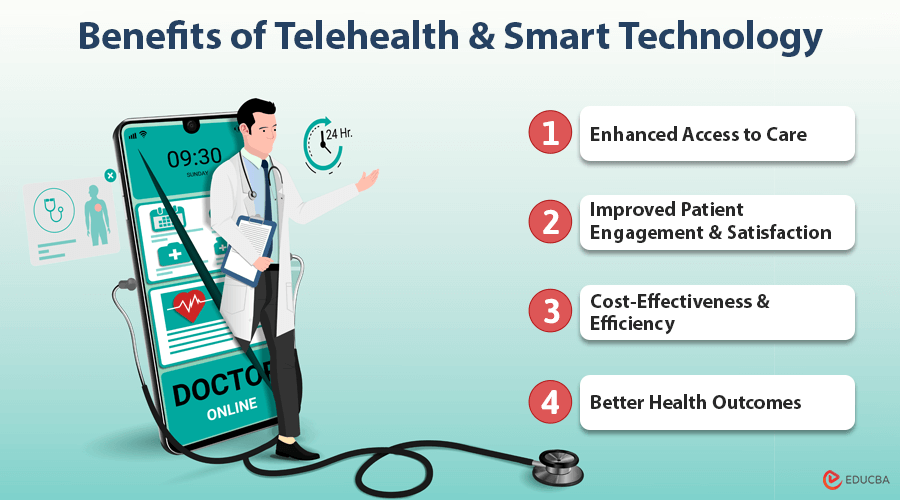
A New Era of Patient-Centered Care
The healthcare industry is undergoing a major transformation with telehealth and smart technology. These advancements are shaping a new era of patient-centered care, including healthcare services like hospital bed rental, improving patient outcomes, and the overall patient experience. In this article, we will explore the development of telehealth, the role of smart technology in healthcare, its benefits, and the challenges that need to be addressed.
Evolution of Telehealth
Telehealth, the provision of healthcare services via digital communication technologies, has existed for many years. In its early forms, telemedicine used telephones and radios to offer medical advice, especially in remote areas. Over the years, telehealth has evolved significantly. With the introduction of video consultations and the expansion of telehealth during the COVID-19 pandemic, telehealth is now widely accepted and used in various areas of medicine, from primary care to specialized services.
Smart Technology in Healthcare
Smart technology refers to advanced devices and systems designed to improve care delivery and enhance patient experiences. These include wearables like fitness trackers and smartwatches, which are part of remote monitoring systems such as blood glucose or heart rate monitors.
AI-powered diagnostic tools are also changing healthcare by improving diagnosis accuracy and enabling remote patient monitoring. For patients, smart technology means real-time health data tracking, personalized treatment plans, and better communication with healthcare providers.
Benefits of Telehealth and Smart Technology
Telehealth and smart technology are improving healthcare in many ways. Here are some of the key benefits:
- Enhanced Access to Care: Telehealth breaks down geographical barriers, making healthcare accessible to individuals in remote areas without needing long-distance travel. This benefits patients with mobility challenges or those residing in remote areas.
- Improved Patient Engagement and Satisfaction: Smart technology and telehealth give patients more control over their health. They can easily access their health records, schedule appointments, and contact healthcare providers. This convenience leads to increased patient engagement and satisfaction.
- Cost-Effectiveness and Efficiency: Smart technology and telehealth can reduce costs by preventing diseases early, minimizing emergency room visits, and reducing hospital admissions. These technologies also promote more efficient care delivery, saving time and money.
- Better Health Outcomes: Healthcare providers can leverage smart technology integrated with remote monitoring systems to track patients’ conditions in real-time. This allows early intervention when needed, improving overall health outcomes and quality of life.
Challenges and Considerations
While smart technology and telehealth are revolutionizing healthcare, there are still some challenges:
- Technological Barriers and Digital Divide: The accessibility of reliable internet and devices to a patient will make or break whether telehealth will be accessible; all patients cannot access equal opportunity towards such facilities, which causes the divide in using them; they depend on their level of digital literacy for access among the patients and the service providers.
- Privacy and Security Concerns: Patient data confidentiality is paramount in telehealth. There is a need to ensure HIPAA compliance for healthcare providers, especially in the United States. Strong security measures are required to prevent data breaches and protect patients’ information.
- Regulatory and Policy Issues: Licensing and reimbursement policies vary widely between regions and are intricate. Therefore, standardization of practice in telehealth is significantly required for uniformity and quality of care. Policymakers must address such regulatory issues to enhance the diffusion of telehealth in the market.
- Training and Adoption by Healthcare Professionals: Education of the healthcare providers is essential for effective implementation. The healthcare providers require training on how to use the telehealth technologies effectively and implement them in practice. Acceptance and adoption by healthcare professionals are necessary for successful telehealth implementation.
Future Trends and Innovations
Telehealth and other innovative technologies continuously evolve, bringing new opportunities for patient-centered care. Here are some of the most promising innovations:
- Emerging Technologies in Telehealth: Virtual reality (VR) and augmented reality (AR) are transforming the healthcare sector, revolutionizing medical and patient education and enabling remote surgeries. Artificial intelligence and machine learning advancements enhance diagnostic accuracy and allow personalized treatment plans.
- Predictions for the Future of Patient-Centered Care: This will be the personalization and precision medicine trend. Telehealth will provide personalized treatment plans for every patient using smart technology and data. Telehealth will become routine care delivery, not a new or separate activity.
- Potential Impact on Healthcare Delivery: Telehealth and digital technology have evolved the traditional healthcare model. These advances improve global health equity by offering healthcare to the underserved. As telehealth becomes more mainstream in healthcare delivery, it will be integral to addressing health outcomes and disparities.
Final Thoughts
Telehealth and smart technology transform healthcare into a more patient-centric, accessible, and efficient system. While challenges like technological access, privacy, and regulation exist, the future is promising. By embracing these innovations, healthcare providers can improve patient outcomes and experiences, ushering in a new era of patient-centered care.
Recommended Articles
We hope this guide on telehealth and smart technology highlights the transformative role of innovation in modern healthcare. Explore these recommended articles for more insights into the future of healthcare and patient care solutions.

